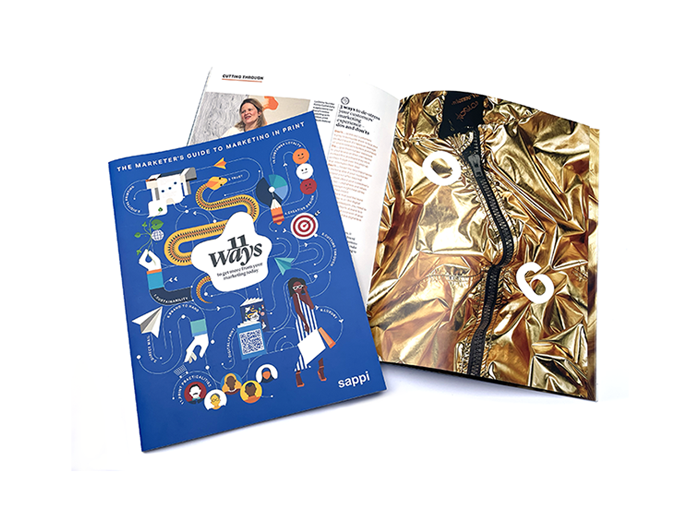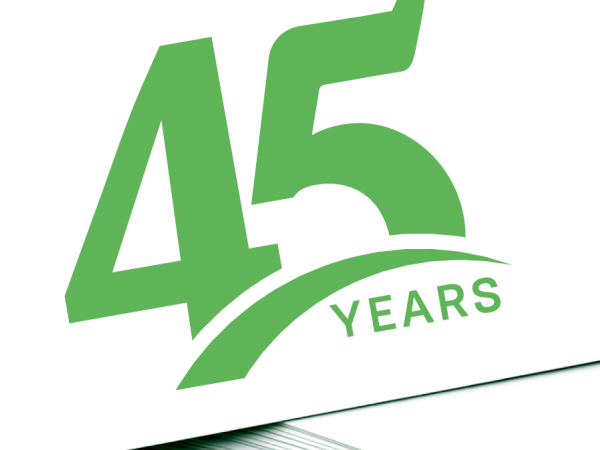Navigating Print Campaigns: from Budgets to Paper Selection
The logistics of putting together a print campaign can seem baffling – but not after you consult our guide-within-a-guide…

Who’s who when it comes to putting together a print campaign?
The vision
At the cornerstone of any marketing campaign is, of course, your marketing manager. Print is likely to be leveraged alongside a range of channels, and a clear set of deliverables needs to be defined.
Production and delivery
The nuts and bolts of the print production process are handled by the production manager, who is responsible for the seamless delivery of the end product and needs to be in touch with the market, solutions and suppliers.
Think Publishing production director Justin Masters explains:
“My department is planning and preparation. We are always looking ahead. I work the timeline backwards – the process starts with when the print piece needs to drop on the readers’ doorsteps. The wrapping and mailing will need to start a week before – and I will need all the files from the creative team well in advance of that for printing. I tell the supply chain exactly what I need from start to finish.”
The creatives
The creative team – charged with producing relevant, visually appealing content – will include the likes of copywriters, art directors and photographers.
Yorgo Tloupas is the award-winning creative director at multidisciplinary Paris studio Yorgo&Co. In his experience, with print campaigns, “You monopolise the talent of dozens of people. The whole thing requires planning and logistics – and success is dependent on everyone working together.”
Álvaro García Barbero is president of NEOBIS and CEO of leading Spanish printers Gráficas AGA. For him, nothing works without a good copywriter creating great copy. “I want to print something great,” he says. “But if the copy is not good, we have a problem.”

According to Matt Jolly, client cervices manager at strategic marketing consultancy and marketing performance partner Go Inspire Solutions, “You can use the best quality printers in the world, but if it’s not very well designed, it won’t look like a good product. Then you can add the best designer in the world, but if they haven’t got very good photography or words to work with, then it’s not going to look like a good product. The creative side is key to making sure that the message that the brand is trying to sell is effectively conveyed.”
“Art direction [design] is applying art to commerce in a way that means solving client problems,” says Tloupas. “My job is primarily to be faced with constraints that are not of my choice and to solve those problems. They can be aesthetic problems, financial problems, anything. I do the job of the doctor.”
“Success is when client, creator and customer are equally happy with what comes out at the end”

How to budget for print
Paper and printing
Perhaps the key cost to consider for any print campaign is that of paper, which can account for around 50% of printing costs. Because paper prices may fluctuate, good budgeting starts with careful planning. That’s where your production manager earns their corn.
“My job is to understand the market – any volatilities and the direction it is going in – so I can make recommendations,” says Masters. “I need to know, for example, how and why recycled paper prices may be increasing disproportionately to mechanical grades. And I need to stick with available grades that fit a certain profile.”
Then you need to make the most of your format options – what is the scope for choosing a different paper grammage or paper size? Do you want to use a paper with higher bulk to increase the ‘thud effect’ of your print piece? What’s the most efficient size and pagination?
“You need to think how you can optimise costs. For example, could you go from 96 to 86 pages, or from 80 g/m² to 60 g/m²? One of our clients recently chose to put eight rather than six features on a page to reduce their overall pagination.”
Wrapping and postage
Another major budgetary consideration for many print campaigns is distribution – how will you get your campaign print into the hands of your customers and prospects? And what will it cost?
“The overall size of, say, a magazine going out into the post is really important,” says Masters. “Because postage rates tend to be bracketed – meaning each product will need to be within certain brackets. And you don’t just need to consider the weight of the print piece, but any inserts or supplements, too – plus packaging. If you end up falling outside a specific bracket that you have planned for, you could be spending huge amounts extra.”
Copy and design
The costs of creative work, including any freelancers, photography and maybe travel, will also need to be accounted for.
“Good photographers take good pictures,” says Tloupas. “Good models look good, and good layouts look good. But where you should conduct any shoot? Location is always important.”
Project management
Careful budgeting and analysis at every stage will help ensure the print process runs smoothly – not least because changes can become more expensive the further along you are.
“You want the necessary checks and balances throughout the campaign, to ensure that each element is correctly signed off, proofed and approved. If something goes wrong at any stage, you are wasting your money.”
And never underestimate the (monetary) value of good communication – within your print marketing team – alongside great supplier contacts.
“I need to buy paper efficiently, effectively and economically – and to have a good rapport and relationship with everyone in my supply chain,” Masters says. “I have to know exactly what I need, and to be proactive at all stages. I undertake continuous conversations with the likes of paper merchants, paper mills and printers – so that expectations can always be kept in check.”
Everything taken together will help ensure that any print campaign delivers for the marketing budget bottom line, too.

How to choose the right paper
How does it look and feel?
Print packs a more emotional punch than other marketing mediums. Customers won’t just react to your printed message, but also to the way it looks and feels.
“There is no such thing as the perfect paper – only the perfect product for the paper. It needs to be the right grammage, whiteness, and brightness – and to have the right feel. It’s like thinking about a car and finding the perfect set of wheels for that car.”
For Tloupas, customers will establish an emotional connection with the right paper. “People get attached to paper the same way they get attached to clothes,” he says. “Nylon doesn’t feel the same as mohair.”
“Luxury brands will want a more voluminous and substantial paper, one that feels special and has a tactile quality,” says Aktas. “Automotive brands will need a whiteness to the paper, so the silver of the images stands out. While holiday companies will be looking for a paper that makes pictures of the sun, sky, and sea jump from the page. The paper needs to offer an experience for the end user.”
“The same image can look different according to the paper,” says Barbero. “For a cosmetic brand, for example, this is important. We will colour-proof the pages, so the customer knows exactly how it will look.”
“We also look at the pagination and the paper weights – and work out how to make it look as substantial as possible,” says Masters. “We often do plain white dummies, and everyone pores over them and rubs them with their fingers. We try to find the sweet spot that ticks all the boxes.”
Is it sustainable?
“It’s really important that the environmental credentials stack up,” says Masters. “It’s an almost unspoken rule that paper should be FSC- or PEFC-certified.”



